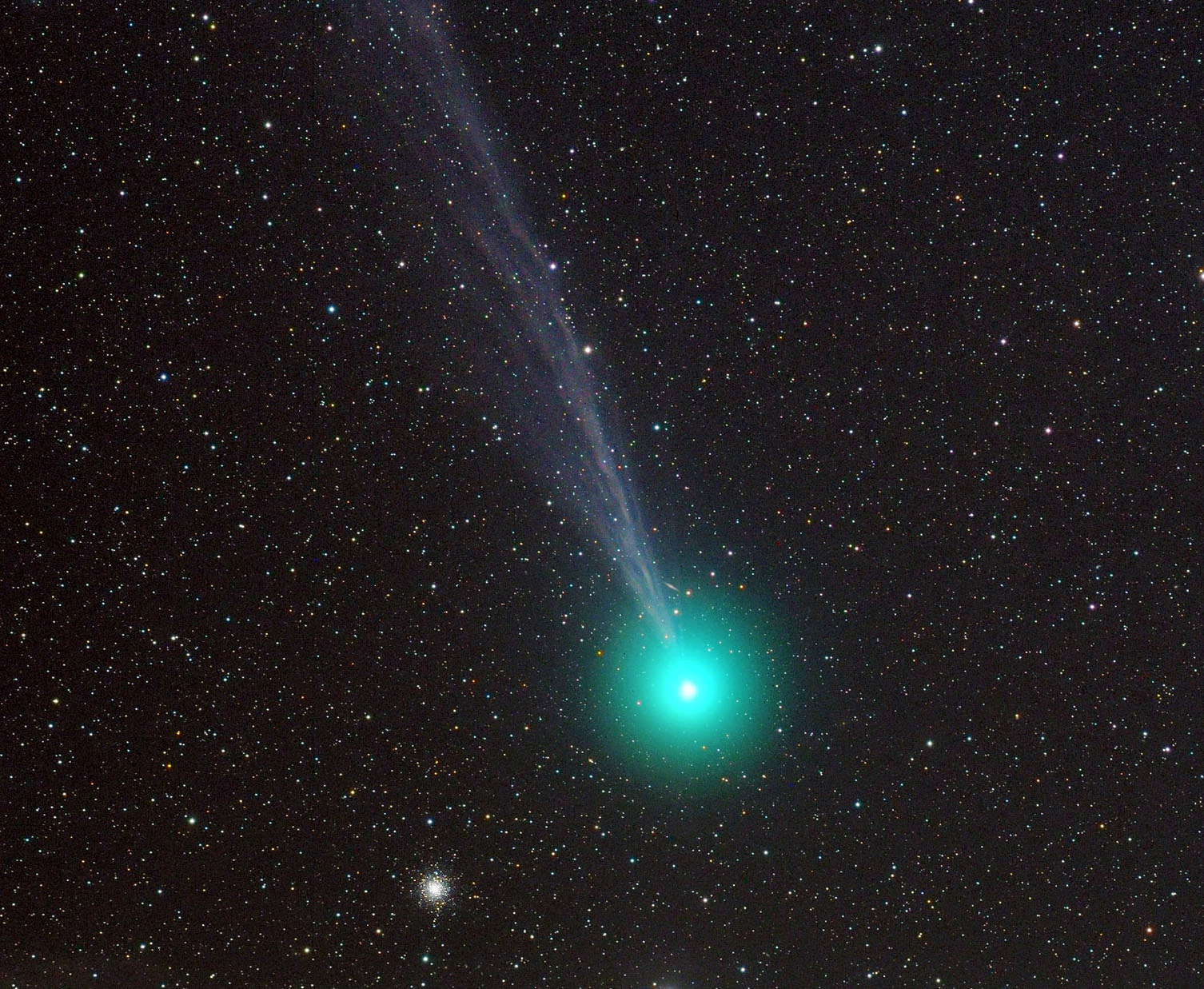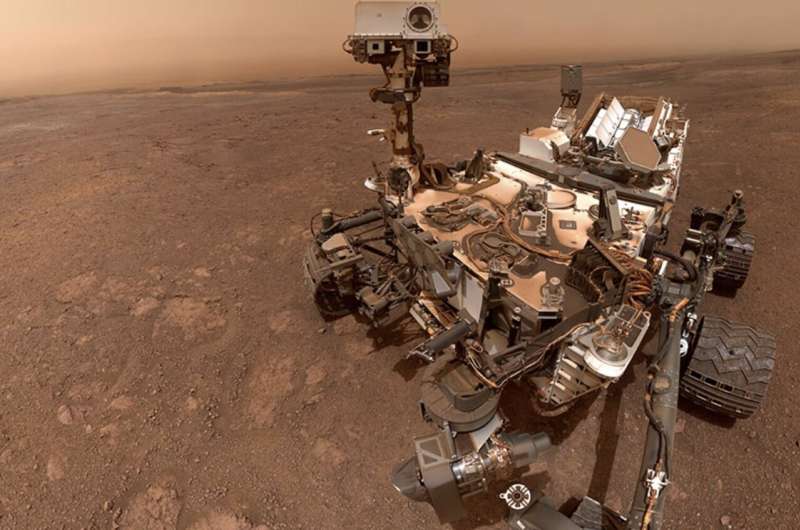Previous 1 ... 204 205 206 207 208 209 210 ... 237 Next
Pictures taken every month from December 2020 to December 2021 (13 total). Some of you might recognize where they were taken.
No idea. ![]()
I likely know exactly where the picture was taken. ![]() Somewhere around the Windsor Car park on the UofA Campus. The building on the far left, at the corner of 124st and Jasper Ave, and the smoke in the middle of the photo looks like the UofA Power Plant give it away.
Somewhere around the Windsor Car park on the UofA Campus. The building on the far left, at the corner of 124st and Jasper Ave, and the smoke in the middle of the photo looks like the UofA Power Plant give it away.
Also, I saw it on NASA APOD. ![]()
NASA confirms International Space Station is to keep orbiting through 2030
For the very first time, astronomers have imaged in real time the dramatic end to a red supergiant's life, watching the massive star's rapid self-destruction and final death throes before it collapsed into a Type II supernova.
Using two Hawaiʻi telescopes—the University of Hawaiʻi Institute for Astronomy Pan-STARRS on Haleakalā, Maui and W. M. Keck Observatory on Maunakea, Hawaiʻi Island—a team of researchers conducting the Young Supernova Experiment (YSE) transient survey observed the red supergiant during its last 130 days leading up to its deadly detonation.
"This is a breakthrough in our understanding of what massive stars do moments before they die," says Wynn Jacobson-Galán, an NSF Graduate Research Fellow at UC Berkeley and lead author of the study. "Direct detection of pre-supernova activity in a red supergiant star has never been observed before in an ordinary Type II supernova. For the first time, we watched a red supergiant star explode!"
The discovery is published in today's issue of The Astrophysical Journal.
https://phys.org/news/2022-01-astronome ... osive.html

Green is an unusual color in astronomy. It is the color to which our eyes are most sensitive, and yet few things in the night sky actually appear green. There are, for example, no green stars, only yellow-white, red, and blue ones. But there can be green comets, and we are still learning why.
Comets can appear green because of the chemistry of the gases vented by the comet. When a comet nears the Sun, ice on the comet’s surface sublimes, forming a halo of gas known as the coma. The solar wind pushes some of the gas away from the comet, causing it to stream out as a long tail. Most of the gas vented is water, but other compounds such as cyanide (CN2) and diatomic carbon (C2) can also be emitted. When ionized, these gasses emit a bright green glow, which can make the coma appear green.

https://www.universetoday.com/153923/wh ... een-tails/
Roberta Bondar flew into space 30 years ago and never saw Earth the same after that
Roberta Bondar for Prime Minister. ![]()

SpaceX's Starlink Internet service will require a dense constellation of satellites to provide consistent, low-latency connectivity. The system already has over 1,500 satellites in orbit and has received approval to operate 12,000 of them. And that has astronomers worried. Although SpaceX has taken steps to reduce the impact of its hardware, there's no way to completely eliminate the tracks the satellites leave across ground-based observations.
How bad is the problem? A team of astronomers has used archival images from a survey telescope to look for Starlink tracks over the past two years. Over that time, the number of images affected rose by a factor of 35, and the researchers estimate that by the time the planned Starlink constellation is complete, pretty much every image from their hardware will have at least one track in it.
Looking widely
The hardware used for the analysis is called the Zwicky Transient Facility (ZTF) at the Palomar Observatory. The ZTF is designed to pick up rare events, such as supernovae. It does so by scanning the entire sky repeatedly, with software monitoring the resulting images to look for objects that were absent in early images but which appeared in later ones. The ZTF's high sensitivity makes it good for picking out dim objects, like asteroids, in our own Solar System.
To ease the task of rapidly scanning the entire sky, the ZTF relies on a very wide field of view and an equally large camera. This broad field of view, unfortunately, also increases the likelihood that an exposure will have a Starlink satellite in view.
To determine how often the presence of these satellites was picked up by the ZTF cameras, the team behind the new analysis took data on the orbits of all Starlink hardware and compared it to the area of the sky captured in every archival ZTF image. Once an image was identified as potentially capturing a satellite, software was used to detect the presence of a bright track across the image. All told, the analysis covered a roughly two-year period from November 2019 to September 2021.
This was during the time that SpaceX was rapidly building its Starlink constellation, and it definitely shows. At the start of the study period, when there were only about 100 Starlinks in orbit, it was relatively common to have a stretch of 10 days of observations where none were detected. By the time 500 were in orbit, those periods were in the past. And once there were over 1,500 Starlink satellites in orbit, the ZTF would commonly image over 200 in a 10-day period.
https://arstechnica.com/science/2022/01 ... te-tracks/

NASA's Curiosity rover landed on Mars on Aug. 6, 2012, and since then has roamed Gale Crater taking samples and sending the results back home for researchers to interpret. Analysis of carbon isotopes in sediment samples taken from half a dozen exposed locations, including an exposed cliff, leave researchers with three plausible explanations for the carbon's origin—cosmic dust, ultraviolet degradation of carbon dioxide, or ultraviolet degradation of biologically produced methane.
The researchers note today in Proceedings of the National Academy of Sciences that "All three of these scenarios are unconventional, unlike processes common on Earth."
Carbon has two stable isotopes, 12 and 13. By looking at the amounts of each in a substance, researchers can determine specifics about the carbon cycle that occurred, even if it happened a very long time ago.
"The amounts of carbon 12 and carbon 13 in our solar system are the amounts that existed at the formation of the solar system," said Christopher H. House, professor of geosciences, Penn State. "Both exist in everything, but because carbon 12 reacts more quickly than carbon 13, looking at the relative amounts of each in samples can reveal the carbon cycle."
Curiosity, which is led by NASA's Jet Propulsion Laboratory in Southern California, has spent the last nine years exploring an area of Gale Crater that has exposed layers of ancient rock. The rover drilled into the surface of these layers and recovered samples from buried sedimentary layers. Curiosity heated the samples in the absence of oxygen to separate any chemicals. Spectrographic analysis of a portion of the reduced carbon produced by this pyrolysis showed a wide range of carbon 12 and carbon 13 amounts depending on where or when the original sample formed. Some carbon was exceptionally depleted in carbon 13 while other carbon samples where enriched.
https://phys.org/news/2022-01-newly-car ... cient.html
They still don't know what to do with all the junk that's already there so the solution is to send up more junk. This is the same way they fix climate change and the gun problem.
On Neptune, It's Raining Diamonds
Massive asteroid safely zooms by Earth, a million miles away
SpaceX launched its first interplanetary mission nearly seven years ago. After the Falcon 9 rocket's second stage completed a long burn to reach a transfer orbit, NOAA's Deep Space Climate Observatory began its journey to a Sun-Earth LaGrange point more than 1 million km from the Earth.
By that point, the Falcon 9 rocket's second stage was high enough that it did not have enough fuel to return to Earth's atmosphere. It also lacked the energy to escape the gravity of the Earth-Moon system, so it has been following a somewhat chaotic orbit since February 2015.
Now, according to sky observers, the spent second stage's orbit is on course to intersect with the Moon. According to Bill Gray, who writes the widely used Project Pluto software to track near-Earth objects, asteroids, minor planets, and comets, such an impact could come in March.
Earlier this month, Gray put out a call for amateur and professional astronomers to make additional observations of the stage, which appears to be tumbling through space. With this new data, Gray now believes that the Falcon 9's upper stage will very likely impact the far side of the Moon, near the equator, on March 4. More information can be found here.
https://arstechnica.com/science/2022/01 ... hin-weeks/
Previous 1 ... 204 205 206 207 208 209 210 ... 237 Next
